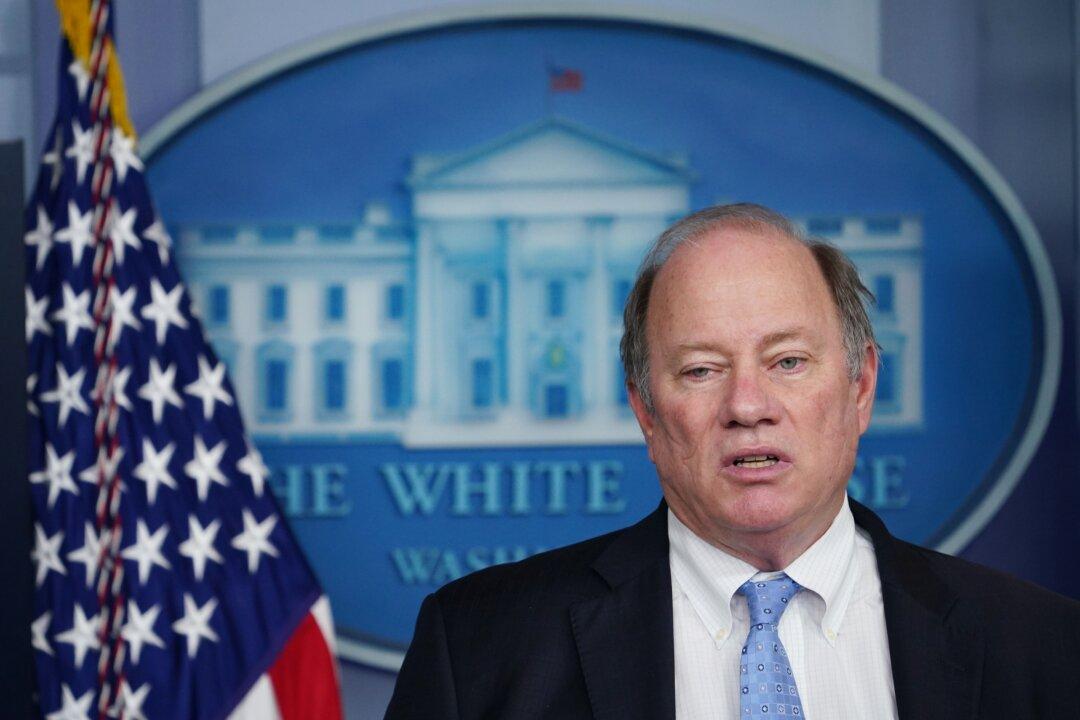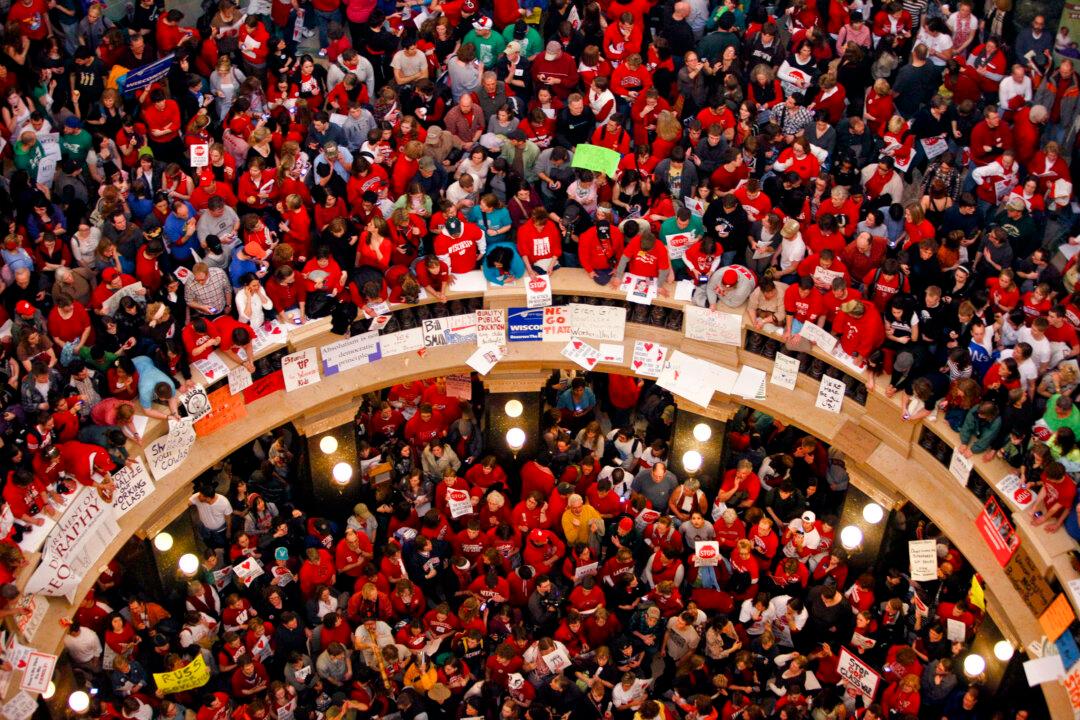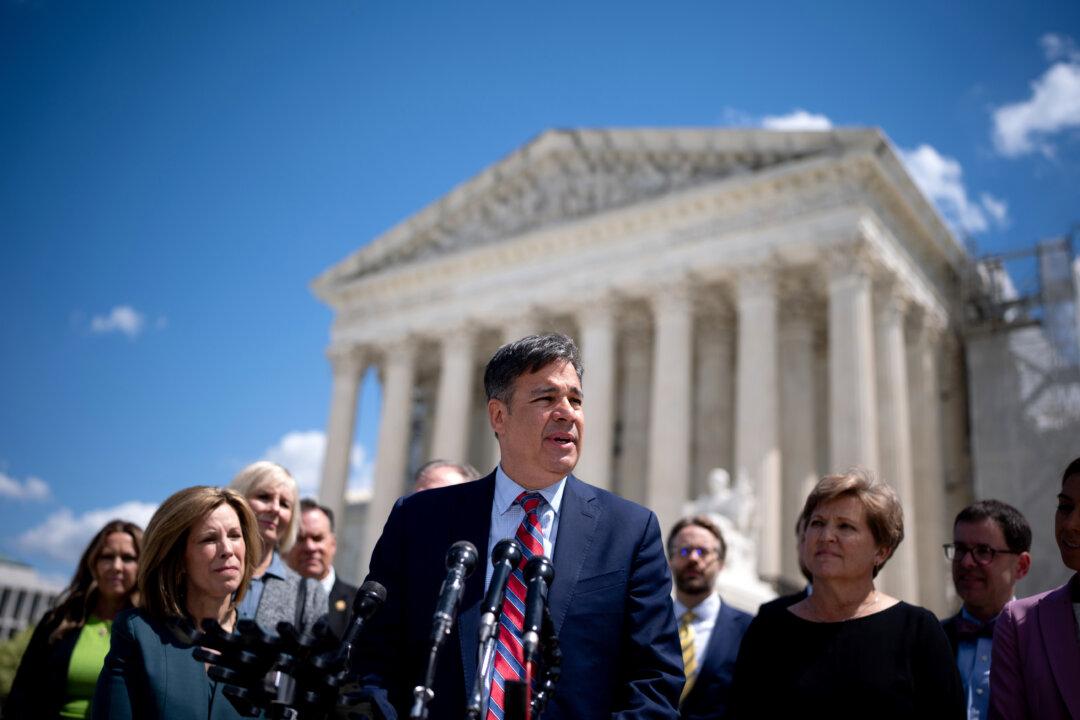Tropical Storm Barry got stronger as it approached the Louisiana coast on the morning of July 13, weather experts said as they warned of a deluge of rain, a large storm surge, and high winds.
“Dangerous storm surge, heavy rains, and wind conditions expected across the north-central Gulf Coast,” it added.
A hurricane warning, tropical storm warning, or storm surge warning were issued for some areas, including parts of Missippi, with others getting a hurricane watch, storm surge watch, or tropical storm watch.
“On the forecast track, the center of Barry will make landfall along the south-central Louisiana coast during the next several hours. After landfall, Barry is expected to move generally northward through the Mississippi Valley through Sunday night,” the service said.

Maximum winds increased to near 70 miles per hour and Barry was expected to strengthen even further before making landfull.
“Barry is expected to be a hurricane when the center reaches the Louisiana coast during the next several hours. Steady weakening is expected after Barry moves inland,” the service stated.
The storm would likely cause a strong storm surge, forecasters said.
“The combination of a dangerous storm surge and the tide will cause normally dry areas near the coast to be flooded by rising waters moving inland from the shoreline. The water could reach the following heights above ground somewhere in the indicated areas if the peak surge occurs at the time of high tide,” the service said. It was also expected to produce 10 to 20 inches of rain over parts of Louisiana and Mississippi, with up to 25 inches in some isolated areas.
Several tornadoes were possible in southeast Louisiana, southern Mississippi, and southern Alabama and the storm was expected to bring high winds as well.

Barry Threatening Millions With Rain
Tropical Storm Barry was threatening millions with heavy rains that could last for days in a test of flood-prevention efforts implemented after Hurricane Katrina devastated New Orleans 14 years ago.As natives and tourists in the Big Easy, Baton Rouge and other heavily populated areas in the storm’s path hunkered down or wandered through quiet, emptied streets waiting for the worst, the Coast rescued more than a dozen people from the flooded remote island of Isle de Jean Charles. Water on the island had risen so high that some residents were clinging to rooftops by the time help arrived.
Video showed water overtopping a levee in Plaquemines Parish, a finger of land extending deep into the Gulf of Mexico, downstream from New Orleans. Officials were still confident that New Orleans’ levees would hold firm. Most of the levees range from about 20 to 25 feet (6 to 7.5 meters) in height.
Officials predicted Barry would make landfall as this year’s first hurricane in the morning near Morgan City, west of New Orleans. The small town had an overnight curfew that expired Saturday morning, after on-and-off rain and power outages. People used cellphones to see in the dark, and opened doors and windows to let the warm, sticky tropical air circulate.

More than 45,000 people in southern Louisiana had lost power, and some roads were underwater as the edges of the storm lashed southern Louisiana and coastal Mississippi and Alabama with rain.
By Saturday morning, the storm system had gathered a “big slough of moisture,” meaning “a lot of rain is on the way,” said National Hurricane Center Director Ken Graham.
Barry was moving so slowly, it was likely that heavy rain would continue throughout the weekend across Louisiana, Graham said during a storm update through Facebook Live. Looking ahead, tracking forecasts showed the storm moving toward Chicago, swelling the Mississippi River basin with water that must eventually flow south again.
Graham pointed to a computer screen showing a huge, swirling mess of airborne water. “That is just an amazing amount of moisture,” he said. “That is off the chart.”





